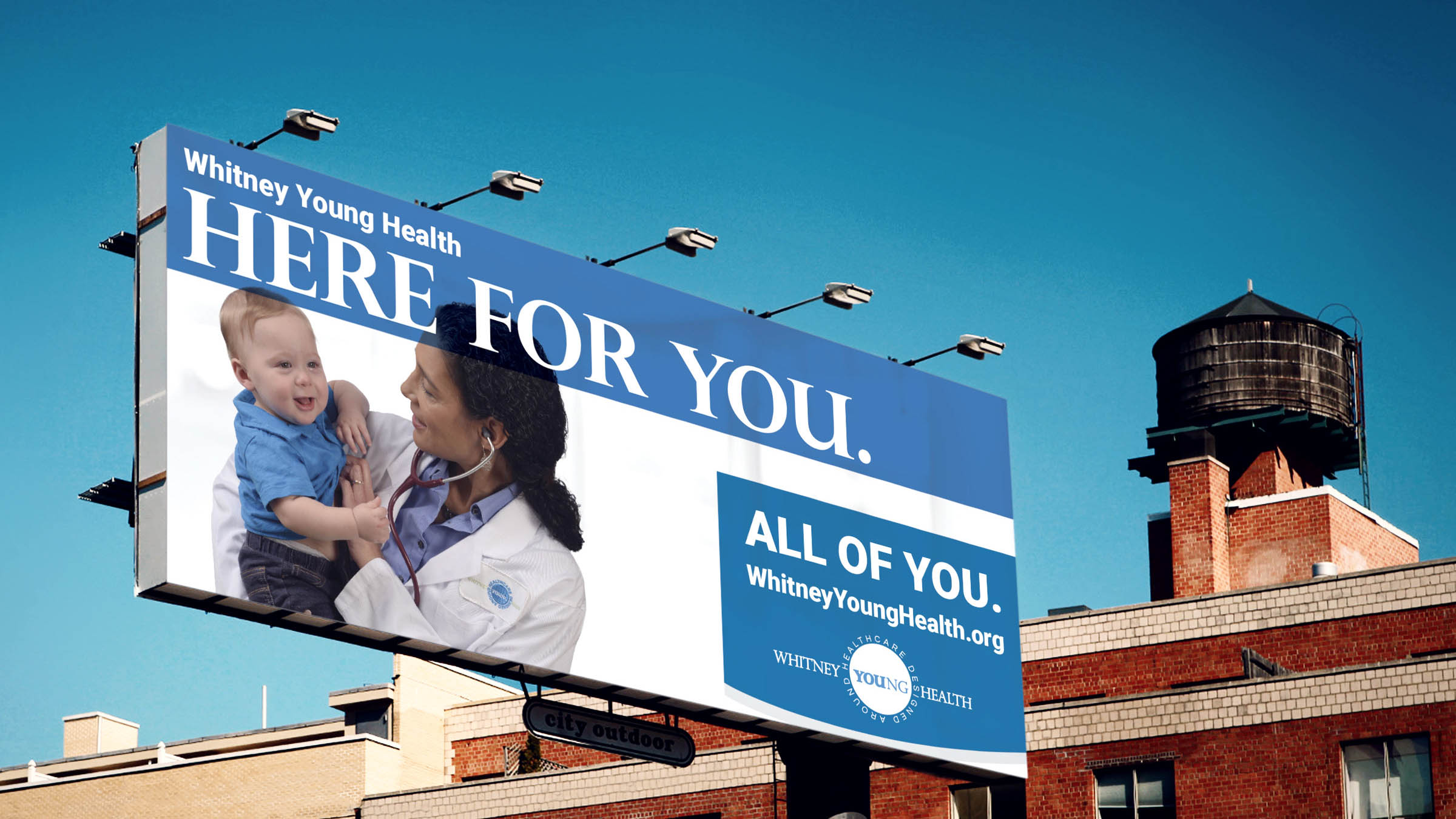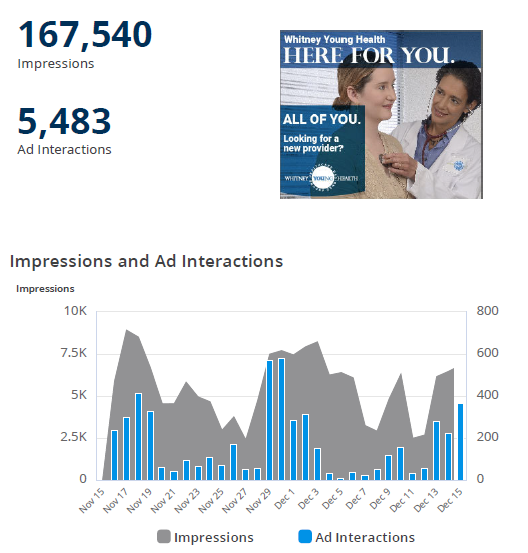Whitney Young Health

The Challenge:
Whitney Young Health (WYH) operates as a health center in Albany, Troy, and Watervliet, NY. In this marketing challenge, we needed to create new branding and communications to attract new patients and prompt the existing patients to return for more visits.
WYH was well-known in the community amongst its loyal base, but they were aiming to increase awareness and attract more prospective patients. In 2019, WYH served 20,000 patients with 64K patient services. With 48% of this population between the ages of 18-64, we decided our opportunity was with those aged 20-40 who may not have an established healthcare relationship. To begin our research and steer the project, we interviewed a sampling of staff, providers, managers, and board members.
Research Reveals:
Our patient profile found that most people entering WYH’s doors were commercially insured patients, mostly young people, at the lower end of the wage scale with benefits, who work in social services, support positions, etc. Many have come from the surrounding Albany Center neighborhood but often move on. Our patients also needed help with the social determinants of health that prevent people from getting care, such as food insecurities, housing, transportation, etc.
In terms of public perception, WYH was challenged with some misconceptions. There was a stigma that WYH was only for lower-income families, and that suburban families don’t come into the city which is perceived as unsafe. And overall, people generally did not know enough about WYH – overshadowed by the big hospitals that get the most news.
It really came down to the fact that WYH needed to attract more patients. The organization hadn’t marketed to the community in a long while – new patients often came with physicians who moved their practices to WYH but had no other compelling reason from what our research told us. When those physicians retired, we often lost the patients.
Our Strategy:
The new brand promise we then created for WYH centered on the idea that they deliver top-quality care through meeting patients wherever they are in life – physically, emotionally, and medically – and through their committed, passionate providers who have patients’ best interests in mind.
Our media plan was three-fold. First, we planned to run a billboard campaign paid for three months, and free for three months. In addition, we would run a transit campaign in surrounding shelters, interior cards, and exterior queens. This was the mode of transportation our prospective patients used.
Second, we would run a radio campaign. 30-second advertisements would run on seven local radio stations for 6-10 weeks. In keeping with our target audience, we chose stations that were number one in Albany for adults 18-35.
Third, we proposed a three-month plan to place targeted display ads on apps, websites, and gaming devices based on demographics, behavior, interests, and age.
Given their website was outdated using inflexible technology, we developed a WordPress landing page so that we could track results and display their message and photography in the best way possible.
The Results:

Online, the campaign results were apparent. After Direct and Organic Search, our referral sources through the digital campaign were driving traffic. The landing page was the second most visited page after the homepage. The overall website experienced spikes in visits in correlation to the display ad campaign. Ads placed on Spectrum Digital were showing up right after direct searches and Google, which was a big achievement. These ads yielded 167,540 impressions with 5,483 interactions. Overall, the website saw 19,876 new users with 87.22% new sessions within the campaign timeframe.
Need an hour to discuss your healthcare marketing dilemma?
Call Cathy at +1 585.216.5766
or email Cathy Here
